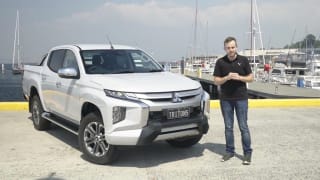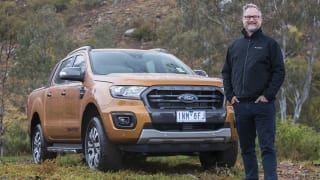Our test vehicle is the D-Max SX 4x2 High-Ride in two-seater single-cab cab-chassis form. The vinyl-floored base model SX is available in a variety of variants but all are powered by the same 3.0 litre turbo-diesel engine and all (except for the six-speed manual low-rider) come with the same six-speed automatic.

When fitted with Isuzu’s economy alloy tray, our Splash White test vehicle is usually $37,817 drive-away, but currently available for only $29,990. This razor-sharp pricing is tailored to entice business purchases, given the ATO’s $30,000 instant asset write-off threshold. And that’s a big chunk of change to lop off your company’s annual tax bill.
Our test vehicle is fitted with several items from Isuzu’s genuine accessory range, including the heavy-duty aluminium tray ($2779), towing kit ($903.10) and electronic brake controller ($688). These extras would obviously push pricing beyond $30K. Even so, it still represents excellent value for money for such a high-quality vehicle.
The no-frills SX has all the basics needed, starting with a leather-bound steering wheel with cruise control, audio and phone controls. There’s also manual air-con, power windows, central locking with keyless entry and a four-speaker infotainment system with 7.0-inch touchscreen and multiple connectivity including Bluetooth. It rolls on 16-inch steel wheels with beefy Bridgestone 245/70 R16 all-terrain tyres and matching spare.
















